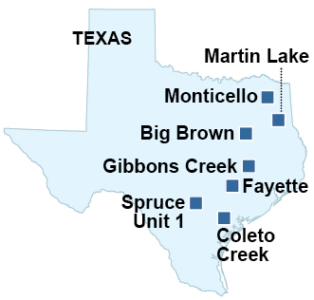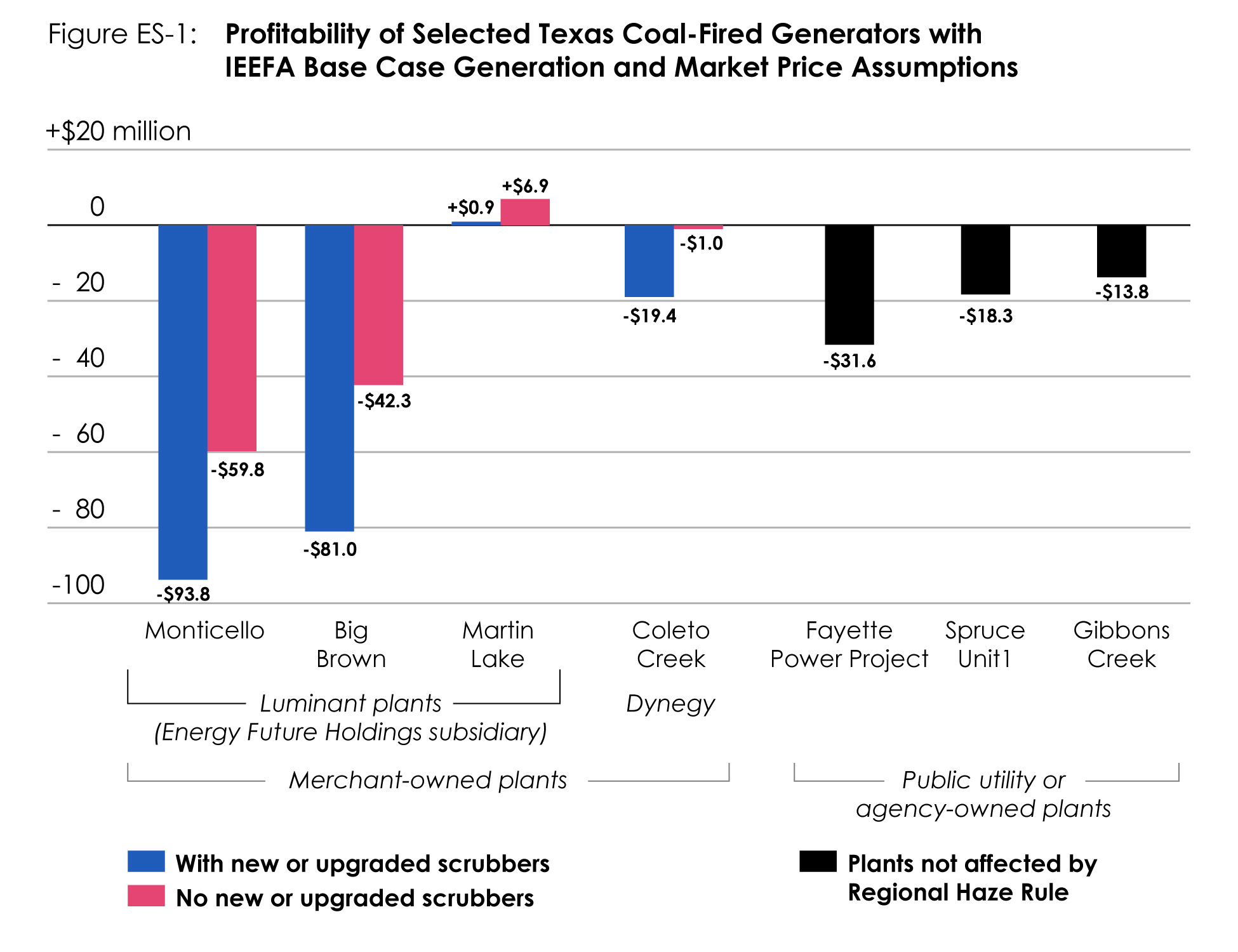IEEFA Texas: The Beginning of the End for Coal-Fired Electricity Across One of the Biggest Power Markets in the U.S.

 We published a research report today describing how the coal-fired electricity industry in Texas is in decline and unlikely to recover in the face of rising competition from other energy sources.
We published a research report today describing how the coal-fired electricity industry in Texas is in decline and unlikely to recover in the face of rising competition from other energy sources.
Our report—“The Beginning of the End: Fundamental Changes in Energy Markets Are Undermining the Financial Viability of Coal-Fired Power Plants in Texas”—looks specifically at seven aging plants that will likely be retired for their failure to compete.
We consider these seven plants emblematic of a fading industry.
 None of the units is financially viable, as none can be expected to produce substantial pre-tax earnings for their owners or be economic for ratepayers in coming years. Indeed, all but one of the plants can be expected to produce pre-tax losses for their owners in coming years
None of the units is financially viable, as none can be expected to produce substantial pre-tax earnings for their owners or be economic for ratepayers in coming years. Indeed, all but one of the plants can be expected to produce pre-tax losses for their owners in coming years
The seven plants are emblematic of a fading industry.
Our analysis plumbs the performance of four merchant generators—the Big Brown, Martin Lake and Monticello plants owned by EFH’s Luminant subsidiary, and the Coleto Creek plant owned by Dynegy. It analyzes three coal-fired plants owned public power utilities or power agencies—the Fayette Power Project, Gibbons Creek, and J.K. Spruce Unit 1. The 8,100 MW of capacity from these seven plants represents a little more than 40 percent of the total coal-fired capacity in ERCOT.
WE SEE SEVERAL FORCES ARRAYED AGAINST COAL-FIRED GENERATION AND THAT SUGGEST RETIREMENT OF COAL-FIRED PLANTS IS LIKELY:
- The collapse of natural gas prices and subsequent declines in the cost of generating power and the increases in generation at natural gas-fired power plants.
- Increased competition from thousands of megawatts (MW) of new wind and solar resources due to steep declines in installation prices, improved operating efficiencies and transmission upgrades.
- Low energy market prices in ERCOT’s deregulated wholesale markets driven by lower natural gas prices and increased generation from renewable resources. (Unlike in some regions of the country, ERCOT does not have a “capacity” market, which often serves to subsidize older plants and keep them on-line when they are no longer cost competitive.)
- Sharp reductions in generation from coal-fired plants as their output has been displaced by increased output from renewable and natural gas-fired capacity. Many coal-fired power plants in Texas no longer act as “baseload plants,” and are instead limited to operations during the peak load seasons. Although coal-fired plants generated 39 percent of the electricity in ERCOT in 2015, by May of 2016 they provided only 24.8 percent.
- Public health and environmental regulations, including the EPA’s regional haze rule, that are forcing coal-fired power plant owners to decide whether to make expensive investments in their aging coal fleet.
Our research demonstrates, in short, how it is not a question of whether ERCOT’s reliance on coal will fade, but when.
The discussion should shift now to how to phase out these plants, what to replace them with, and how to retrain their workers.
David Schlissel is IEEFA’s director of resource planning analysis.
RELATED POSTS:
IEEFA Texas: As Lone Star State Coal-Fired Power Plants Close, Powder River Basin Mines Are Losing Their Largest Customers
IEEFA Kentucky: Owensboro Coal-Fired Power Plant Is No Longer Viable
IEEFA Montana: Closing of Two Coal-Fired Units Is an Acknowledgment of Their Failure to Compete















